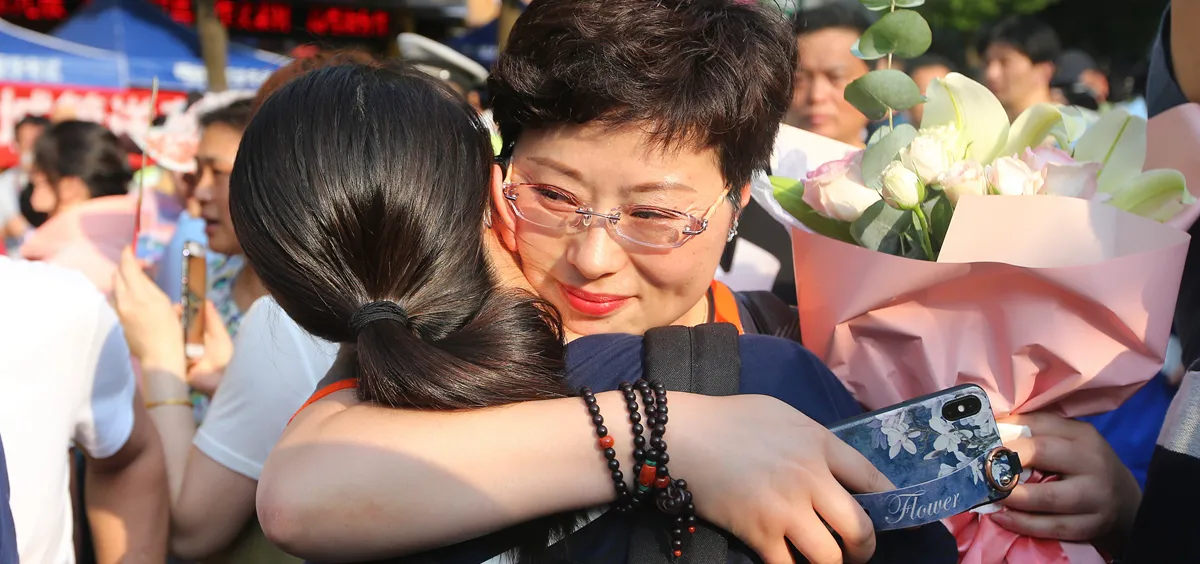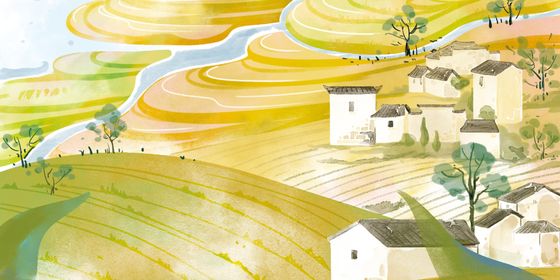Embrace the history of this clingy character
In 273 BCE, the army of the State of Wei suffered yet another defeat by the state of Qin. Nearly 130,000 of their troops were dead, and Mang Mao (芒卯), their general-in-command, was nowhere to be found. Since the Qin state’s previous invasions had all ended with them taking over Wei cities, most of frightened Wei officials advised King Anxi to offer the enemy a large swathe of territory in exchange for a lasting truce.
Only adviser Su Dai (苏代) opposed the proposal: “To present Qin lands is like carrying kindling to put out a fire; as long as the kindling remains, the fire continues to burn (且夫以地事秦,譬犹抱薪救火,薪不尽,火不灭).” Su turned out to be right—Qin conquered Wei in 225 BCE by opening a dike on the Yellow River and submerging Daliang, the Wei capital.
Appearing over 2,000 years ago, the character 抱 (bào) consists of a “hand” radical (手 shǒu) on the left side, and the original 包 (bāo) radical on the right side, which resembles a pregnant woman, meaning to hold or embrace something in the arms.
For instance, the poem “Meng (《氓》) ” in The Book of Songs (《诗经》), the earliest collection of Chinese poetry beginning in the 11th century BCE, goes, “氓之蚩蚩,抱布贸丝 (Méng zhī chīchi, bào bù mào sī, A plain and honest man carries some cloth to exchange for silk).”
The foundational meaning of 抱 is still used today, as in 拥抱 (yǒngbào, hug) and 怀抱 (huáibào, embrace). Chinese writer Lu Ming noted in his 2003 book “Chinese In Need of Hugs” (《缺少拥抱的中国人》) that in his childhood, Chinese people, including family members, were too conservative to hug each other, but gradually grew more comfortable with it later on.
Compared with hugging and handshaking, which came to China in modern times from the West, the practice of baoquan (抱拳, “holding fist”) can be traced back over 3,000 years. Adapted from the traditional 拱手 (gǒngshǒu, cupping one’s hands) etiquette of Han Chinese people, baoquan is a gesture where the open palm of one hand is placed against the knuckles of the other in front of one’s chest. Baoquan is used by martial artists who perform the gesture before a fight or performance.
Gongshou, where one hand is lightly cupped in the other before the chest, is still used for greetings, congratulations, condolences, and farewells by the middle-aged or elderly. Hosts on state broadcaster CCTV sometimes wish their audiences a happy new year with this gesture during the Spring Festival Gala, which airs every year on the eve of Chinese New Year.
There are many rules for this etiquette. In general, men place their left hand atop their right, while women do the opposite; otherwise, the gesture may be misconstrued as an offer of condolences or a sign of disrespect.
Phrases using 抱 to refer to the legs are often used metaphorically. 抱大腿 (bào dàtuǐ) is a popular slang term that was updated from the phrase 抱粗腿 (bào cūtuǐ, “holding the fat thigh”) which first appeared in the Qing (1616 – 1911) novel Three Heroes and Five Gallants (《三侠五义》), and is used to refer to the act of attaching oneself to the rich or powerful. It is often used in mockery or self-mockery, as in 我要抱紧经理的大腿,才有肉吃 (Wǒ yào bàojǐn jīnglǐ de dàtuǐ, cái yǒu ròu chī, I’ll attach to my manager’s thigh, then I can get some meat to eat).
Similarly, 抱佛脚 (bào fójiǎo, “clasping the Buddha’s feet”) describes a last-ditch effort, as in 他平时不努力学习,要考试了才临时抱佛脚 (Tā píngshí bù nǔlì xuéxí, yào kǎoshì le cái línshí bào fójiǎo, He normally doesn’t study hard, then crams before the examination).
When referring to children, the character has multiple meanings. Different from 抱小孩儿 (bào xiǎohái’r, carrying a baby in the arms), the term 抱儿子 (bào érzi) means to have one’s first child, and 抱孙子 (bào sūnzi) to having grandchildren—for instance, 听说你快抱孙子了 (Tīngshuō nǐ kuài bào sūnzi le, I hear that you will soon be a grandmother). 抱养 (bàoyǎng), or simply 抱, is to adopt a child, as in 她从医院里抱养了一个孩子 (Tā cóng yīyuàn lǐ bàoyǎng le yī gè háizi, She adopted a baby from a hospital).
In addition to physical interactions, 抱 can also indicate people’s feelings and health conditions, often negative ones, such as 抱歉 (bàoqiàn, feeling sorry), 抱恨 (bàohèn, being overwhelmed with remorse), and 抱病 (bàobìng, being in poor health). 抱怨 (bàoyuàn) is to complain, and 抱屈 (bàoqū) is to feel wronged. To 抱不平 (bào bùpíng) or 打抱不平 (dǎbàobùpíng), however, is to be ready to intervene on behalf of those who have suffered injustices. For instance, 我们都为她抱不平 (Wǒmen dōu wèi tā bào bùpíng, We all felt that she had suffered a cruel injustice).
Of course, a burning sense of injustice is nothing without action and power. Just ask King Anxi and the Wei, obliterated by the Qin’s devastating tactics of bursting the dam, and eventually defeated once and for all.
Cover image from VCG












